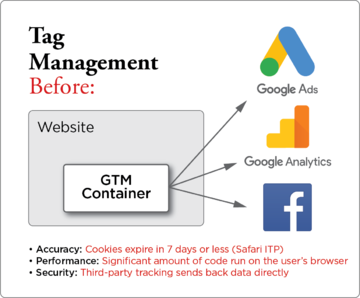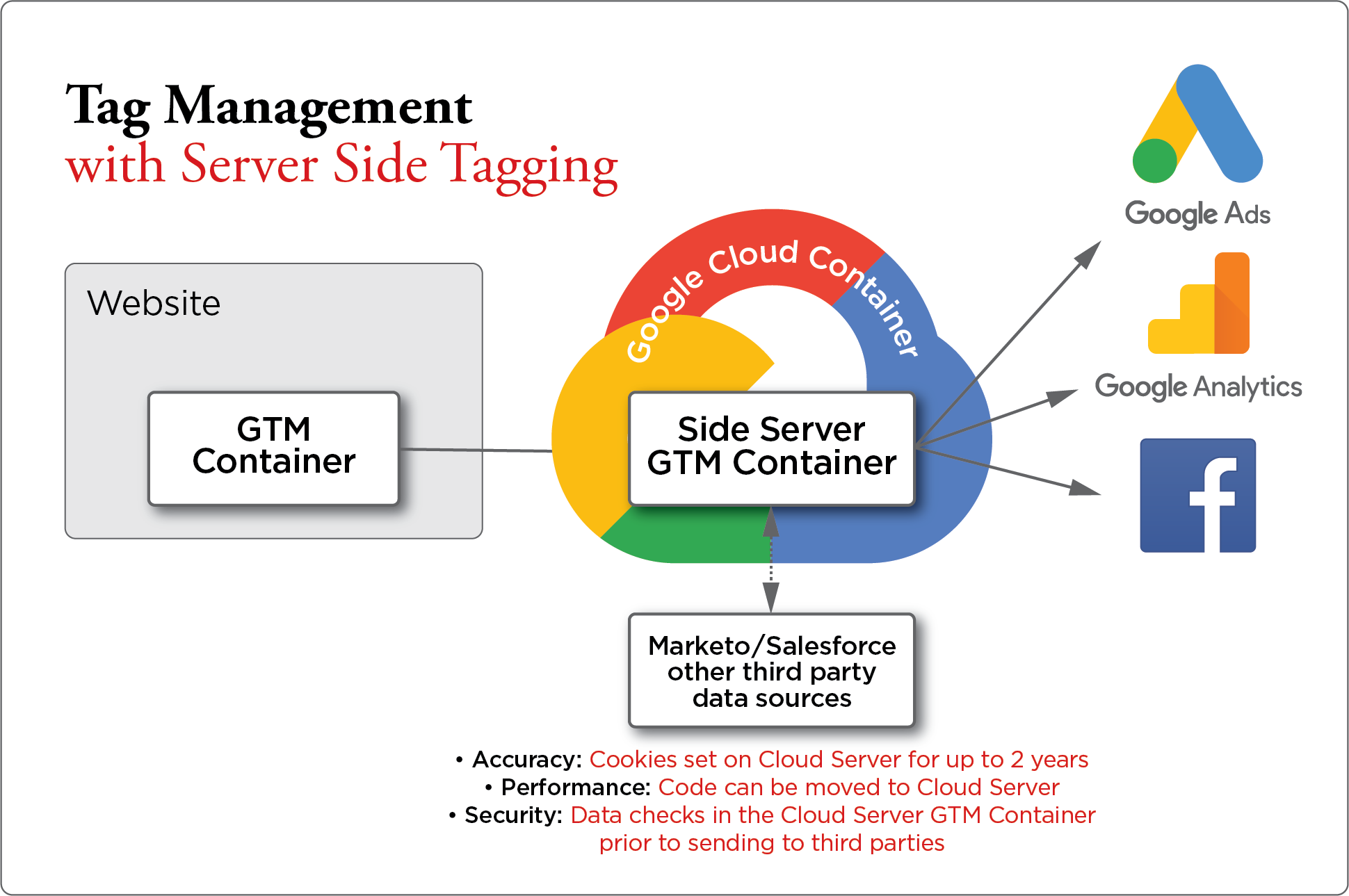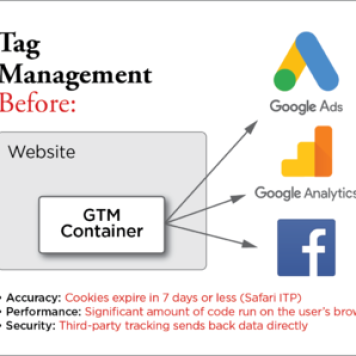Three Ways Server-Side Tagging Can Help Marketers Succeed
The release of server-side tagging in Google Tag Manager has a lot of digital marketers talking, and for all the right reasons. For years, marketers have relied on a variety of third-party tech partners to gain deep insights into customer behavior on their websites, sometimes trading such valuable information for slower site performance, questionable security, and misleading data sets.
Why should marketers be looking at server-side tag management right now? For starters, privacy safeguards implemented or being implemented in the most popular browsers are quickly making server-side tagging not just an option, but an eventual necessity.
Two such examples can be found in Safari’s Intelligent Tracking Prevention (also known as ITP), which has severely restricted third-party cookies, as well as Chrome’s restrictions on third-party cookies that are set to roll out in 2023.
These changes amount to a complete overhaul of the current landscape marketers have grown accustomed to, and are creating new challenges for marketers looking to provide relevant ads and highly personalized experiences to customers. For digital marketers to continue to maintain audiences and provide relevant advertising, implementing server-side tagging will be a must.

The server side is also the secure side
Browser security will continue to be a hot topic for both brands and the customers interacting with them in 2021, making server-side tagging an even hotter commodity moving into the new year. Server-side tagging allows digital marketers to identify customers with server-based (http only) first-party cookies.
Further, server-based cookies are more secure, as a result browsers will allow such cookies for user identification. This change ensures privacy by the browsers, and will ultimately force more digital marketers to embrace server-side cookies moving forward.
These issues make the availability of server-side tagging all the more exciting. The new features give users the ability to move Google Tag Manager containers from a website or app to a server-side environment, thus creating another layer of tagging between sites (and other data sources) and other third-party marketing tags such as Google Ads, Facebook, and more.

There are many benefits to moving your tag management to a server-side environment, but for the sake of time, we’re going to feature our top three reasons why your digital marketing strategy should seriously consider migrating your tags to a Google Cloud Container in 2021.
 Improved website performance.
Improved website performance.
One of the primary benefits of Google Tag Manager is the ease in which digital marketers can add new tags to marketing campaigns. But, that also comes with a price—namely, how easy it is to overload a website with a slew of trackers and the associated JavaScript that can have a serious impact on site performance and page load times.
With server-based tagging, much of the work being done within our client’s browser can be offloaded to our Google Tag Manager Container in the Google Cloud environment. We accomplish this is by moving browser-based code to server-side clients, which in turn apply business rules for tracking, security, and potential data enrichment from other systems. This newly transformed data is then sent to the final consumer of said data, resulting in less code that is downloaded and run within the browser to give users improved site performance and a better overall user experience.
 Customer-centric security features.
Customer-centric security features.
There’s little doubt that data and privacy concerns remain a key concern of Internet users. For example, a recent survey of mobile users in the U.S. showed that 64 percent of respondents take data privacy of brands very seriously. Further, 43 percent stated that they refused to make mobile purchases because of concerns that their data would be stolen.
With browser-side containers, every new marketing tag added to the browser can send user data directly to third-party sources. Most of the time this isn’t an issue, however, the fact remains that digital marketers have very minimal oversight or control of the data that’s collected.
A server-side client, on the other hand, puts marketers in control of the data collected and forwarded to third-party tracking providers. Server-side GTM accomplishes this through data checks performed in the Cloud Server GTM Container prior to sending said data to third parties, resulting in greater security for your customers’ data.
 Analytical accuracy where it matters most.
Analytical accuracy where it matters most.
Another reason brands should consider server-side tagging in Google Tag Manager is the ability to improve the quality and accuracy of the various data that are collected through customer interactions and site visits.
With current browser-based containers, for example, expiring cookies can lead to a wide range of undesirable results. Because of some of the privacy features browsers such as Safari and Firefox (ITP mentioned above) implement directly affect user cookie privacy, it’s not uncommon for such users to return to websites a week later only to appear to a brand viewing the data from an analytical perspective as completely new users.
Even more, such privacy features can negate conversions with a third-party cookie after as a little as a day, essentially converting what could be a successful campaign into a data-driven failure.
Accuracy in analytics and data sets is one of the features that makes server-side tagging in GTM so valuable. With server-side tagging, cookies can now be set from the Google Cloud Server, as opposed to the unreliable browser-based cookies that are in use today. With server-based cookies, all browsers will allow longer timeouts, thus allowing your marketing technology to ‘see’ your customers for who they are and for a much longer period of time, leading to more personalized and relevant targeting and communication.
Discover what server-side tagging can do for your brand
With the introduction of server-side tagging to Google Tag Manager, our top three picks of enhanced security, faster site performance, and improved accuracy in analytics are just the tip of the iceberg. Want to learn more about what migrating to a server-side tagging platform can do for your brand? Contact Us or Schedule a Free Consultation







0 Comments: